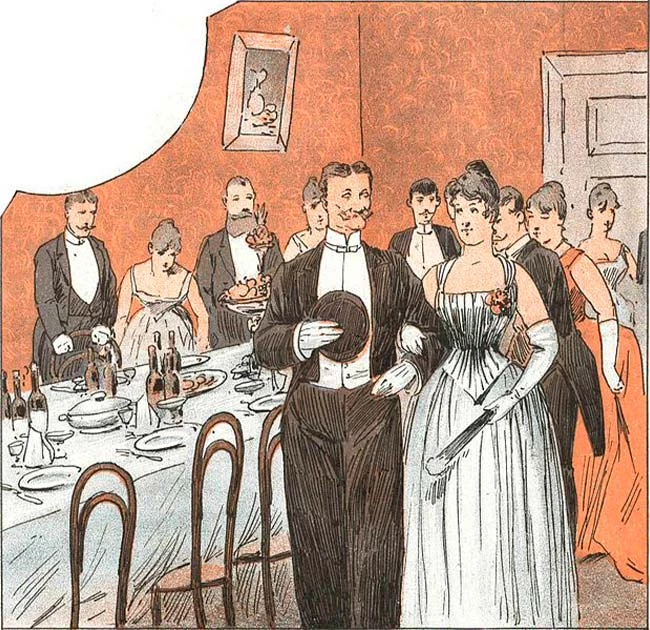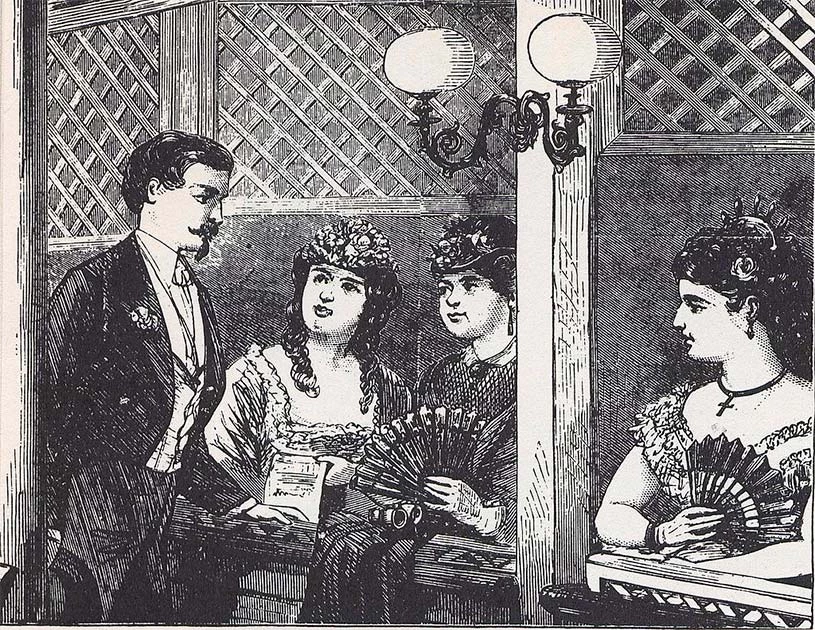When it comes to dating, there have been many rules for what should and shouldn’t be done. The ancients had their social norms, we have ours, and so did everyone in between.
In Victorian England, certainly one of the more staid and rulebound periods in English history, both men and women had to follow strict rules when it came to dating and finding an acceptable spouse. A person was expected to marry amongst their socio-economic class; marrying someone from a lower class was shameful, and society would look down upon the couple.
That doesn’t sound that far from most of history, but we are just getting started. What were some other rules associated with dating in the Victorian era?
Rules for Ladies
There were many social rules that ladies had to follow when meeting, courting, and eventually marrying men in Victorian England. One of the most popular tools that women were recommended to own was several self-help books.
Some of these guides included popular works such as Maiden, Prepare to Become a Happy Wife and Mother by Henry Butter, Advice to Single Women by Haydn Brown, and The Frugal Housewife by Lydia Maria Child. In these books of etiquette and proper behavior, one should engage in while courting, there are some wise words of advice for women.
A popular recommendation was “Never let a man hold your hand; decline his offer of assistance with getting in and out of carriages; never squeeze into tight space with a gentleman; never speak of your private affairs or feelings; never borrow money from a man.”

Other social rules that were in place for women while dating during the Victorian era included things like, “Never tolerate or perform rudeness, crudeness, indifference, or ignorance from or to another human being.” A proper lady should always have a positive attitude (it sounds a lot like the advice women today get, which is to “smile more”), is never to be seen in public chewing gum, and a lady worth courting or marrying was never to fix her hair or makeup in public.
Other rules included not gossiping, never “hold private conversations in public gatherings,” she must own at least one self-help manual that covers etiquette protocol, and was expected to “always look for ways to better herself spiritually, intellectually, and physically.”
Women were not permitted to accept any gifts from a man until he had proposed marriage to her. If she were to accept a gift from a man, it was seen as unbecoming, rude, and “implied an obligation on her part.”
Women were not allowed to meet a man alone; they had to be accompanied by an older person or family member. Along with a chaperone, ladies were to ask their mothers’ permission before meeting with a man. If a lady of courting age (around 20 years old) was home alone and a man came to visit her, she was not allowed to welcome him into the home. Another family member had to be in the room at all times.
Single and Ready to Mingle
When a young woman wanted to start dating in the Victorian era, an announcement was made that she was “coming out.” This had nothing to do with her sexual identity like coming out means today; back then, it was the official way to announce that a girl was interested in meeting and attending events where a potential suitor could be found.
If the young lady came from an upper-class family, a ball or dinner party would be held as a way to announce their daughter was ready to be a wife, much like debutantes’ balls in the United States. For middle-class families, hosting a feast to celebrate their daughter seeking a spouse was common.
If a feast could not be arranged in poor families, there were still ways to let the men know a lady was on the market. The young lady was to advertise her availably by wearing only long dresses, wearing her hair up, and attending social events like festive balls or church activities with a family member.
Women were not allied to “make obvious public plays for the attention of a young man, or insinuate that she wanted an invitation from him.” However, there were still ways for a woman to flirt with a potential suitor.
At social gatherings and under their chaperone’s watch, women would flirt with men using their fans. The position, speed, or use of the fan could mean many things, not just that the woman in question was hot, and the men in attendance had to read the fan flirt signals well if he was interested in a lady.
If a single woman kept her fan closed when talking to a man, it was a sign that she was not interested in the suitor. A half-open fan was the Victorian equivalent to the “friend zone”; she liked talking to the man but had zero romantic interest in him. A fully open fan meant that the lady was very interested in spending time or dancing with the man she was speaking with.

There were other fan flirtation signs women would use to communicate with men. If she was fanning herself quickly, it meant she was an independent woman. Or she was just hot.
Slow fanning meant she was engaged. Or not too hot, but warm. Fanning the face with the fan in the left hand meant the man should go away; she was uninterested. On the contrary, fanning the face with the fan in the right hand meant that the gentleman was permitted to continue his advances.
If a young lady were to repeatedly open and close her fan when speaking with a suitor, she was hinting that she wanted to kiss him. Swinging the fan meant she wanted to go home with him (even though she was not allowed to go home with a man she was not married to.)
- Orchidelirium: The Victorian Madness For Orchids At Any Price
- Boy Jones: Peeping Stalker of Queen Victoria
Once the initial enquiries were over, there were still rules of engagement. Two people who were engaged in courtship could not express their affection for each other physically or when speaking together. The way a couple would express their feeling was through writing love letters.
Love letters were a way to build a relationship and fall in love in a wholesome and appropriate manner. Love letters were considered sacred and incredibly private. Nobody in either person’s family was allowed to open or read love letters.
Upon receiving a love letter, the person was to leave the room and read the letter in their room in private. In a period known for its self-help books, there were even books about how to write love letters. Two such books were The Dictionary of Love and The Art of Good Behavior.
Rules for Men
Men were also expected to follow specific rules regarding dating in Victorian England. Self-help books told men to “Seek out women with large bulbous heads; they are bound to be well sexed and full of pluck.”
Another book also recommended that a man should “choose for your wife a woman with a full bust and good round limbs, as well as a good, large, well proportioned head – one who can run and walk and lift a good load.” One book mentioned that “a man should realize the idea of sex is abhorrent for a woman, and shouldn’t affront her virtue by making her the football of his lust.” No, indeed.
The book The Marriage Guide for Young Men: A Manual of Courtship and Marriage mentioned that women preferred “backward, awkward, and even a little uncouth” manly man over a man who was polite and agreeable.

Other rules for men included that it was expected to stand up when a woman entered the room for the first time and again upon her final exit. Men were not permitted to hold a lady’s arm or hand except if she needed support to prevent falling.
Men were prohibited from staying at a woman’s house for a long time; to do so was incredibly disrespectful and improper. Men were told never to remove their coats when sitting, standing, walking with, or riding a horse with a lady.
Also, forget about asking a woman to dance without wearing a coat; that was a no-go. Once a man was engaged to a lady, he could not “turn back to see any other girl,” and there was to be absolutely zero physical contact of any kind until marriage. A gentleman was advised against “frequenting the haunts of disreputable women,” even though this was a time in history when prostitution was legal and commonly practiced.
Top Image: In a society where much could not be said, subtle signals were essential for success at the Victorian dating game. Source: Eleuterio Pagliani / Public Domain.